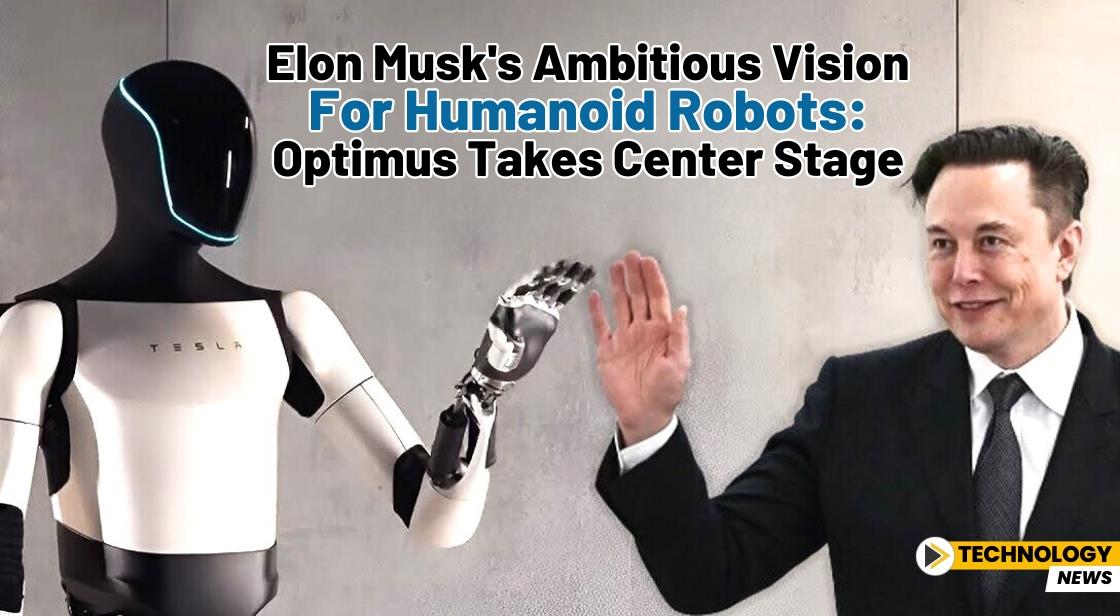Elon Musk's Ambitious Vision for Humanoid Robots: Optimus Takes Center Stage

News Synopsis
Elon Musk has long been known for his grandiose claims, and with the recent introduction of Tesla's humanoid robot, Optimus, he seems to be aiming for an unprecedented milestone in the robotics industry. During the highly anticipated Robotaxi Day event held at Warner Bros. studio in Burbank, California, Musk declared that Optimus could become "the biggest product ever of any kind."
Advancements in Humanoid Robotics
Since its initial reveal in 2021, which featured an actor in a suit, to a prototype that walked stiffly onstage in 2022, the Optimus robot has undergone significant transformations. At the recent event, the showcased prototypes demonstrated impressive abilities, including dancing, pouring drinks, and even engaging in games of rock-paper-scissors with attendees. Despite the entertaining presentation, Musk emphasized the seriousness of Tesla's commitment to robotic technology.
In July, he announced that Tesla would produce "genuinely useful humanoid robots in low production for Tesla internal use next year," with a goal of high production available for other companies by 2026. With an anticipated price range of $20,000 to $30,000, Musk envisions a future where "the Optimus will walk among you."
Facing Competition and Technical Challenges
While Elon Musk's ambitions are bold, he is not alone in this rapidly evolving field. Other tech giants are also investing heavily in humanoid robotics, aiming to create solutions for labor shortages and high-risk tasks. For example, in October 2023, Amazon expanded its partnership with Agility Robotics to integrate its bipedal humanoid robots, known as Digit, into its warehouses. These robots are designed to "move, grasp, and handle items," showcasing the increasing interest in automation.
Nvidia is also making strides in this arena, with CEO Jensen Huang discussing the company's Project GR00T at its annual GTC event in March. This initiative is intended to help the industry achieve "giant leaps" toward advanced humanoid robots. Huang's vision of a future populated by personal robots reminiscent of R2-D2 and C-3PO echoes Musk's aspirations.
Startups are joining the fray as well. Figure, a robotics startup founded in 2022 and valued at $2.6 billion, recently unveiled an upgraded version of its humanoid robot using Nvidia technology. Additionally, Boston Dynamics, owned by Hyundai, launched a new iteration of its Atlas robot, emphasizing real-world applications.
Market Potential and Predictions
The humanoid robotics market is projected to experience explosive growth. A February report from Goldman Sachs estimated that the total addressable market could soar to $38 billion by 2035, a significant increase from a previous estimate of $6 billion. However, the question remains: how will Musk's Optimus differentiate itself in this burgeoning market and achieve the status of "the biggest product ever of any kind"?
Industry analysts like Paul Miller from Forrester acknowledge the appeal of humanoid robots but point out that compelling use cases are less evident. He notes, "These robots have a wow factor, but they may not have the best form factor for addressing industry's dull, dirty, and dangerous tasks." This sentiment highlights the need to prioritize functionality over aesthetics in developing robotic solutions.
Technical Hurdles Ahead
Developing humanoid robots poses significant technical challenges. Jim Fan, a leading AI and robotics researcher at Nvidia, noted that creating effective models for humanoid robots is more complex than training systems like ChatGPT. The development of humanoid robotics relies on a mix of "internet data, simulation data, and real robot data," complicating the process further.
Gene Munster of Deepwater Asset Management expressed cautious optimism about the Optimus project, recognizing its advancement from prototype to pilot phase. However, he also pointed out that the robots still exhibit more robotic than human characteristics, indicating that there is considerable work to be done.
Conclusion: A New Frontier in Robotics
Elon Musk's pursuit of humanoid robots through the Optimus project reflects his ambition to revolutionize the robotics landscape. While the potential for these robots to become a significant product is evident, numerous challenges lie ahead. The competitive landscape is expanding, with major players like Amazon, Nvidia, and various startups also vying for a share of the market. Each of these companies brings unique technological advancements that could alter the course of humanoid robotics.
Musk's focus on making Optimus "the biggest product ever" is a testament to his vision, yet he must address the practicalities of functionality, market demand, and technical hurdles. As experts highlight, the key to success in this field lies not only in creating visually appealing robots but also in delivering practical applications that fulfill specific industry needs.
With a market projected to grow dramatically in the coming years, the race for effective humanoid robotics is more competitive than ever, and the outcome remains uncertain.
As Musk continues to innovate, it will be fascinating to see whether Optimus can truly live up to its grand ambitions or if it will be yet another chapter in the story of bold technological aspirations. The journey ahead is one filled with both promise and challenges, making the coming years critical for Musk and the world of humanoid robotics.
You May Like









